How appropriately designed community outreach activities can both reduce risk and generate significant environmental and social benefits
A Case Study of community fire management in Ghana
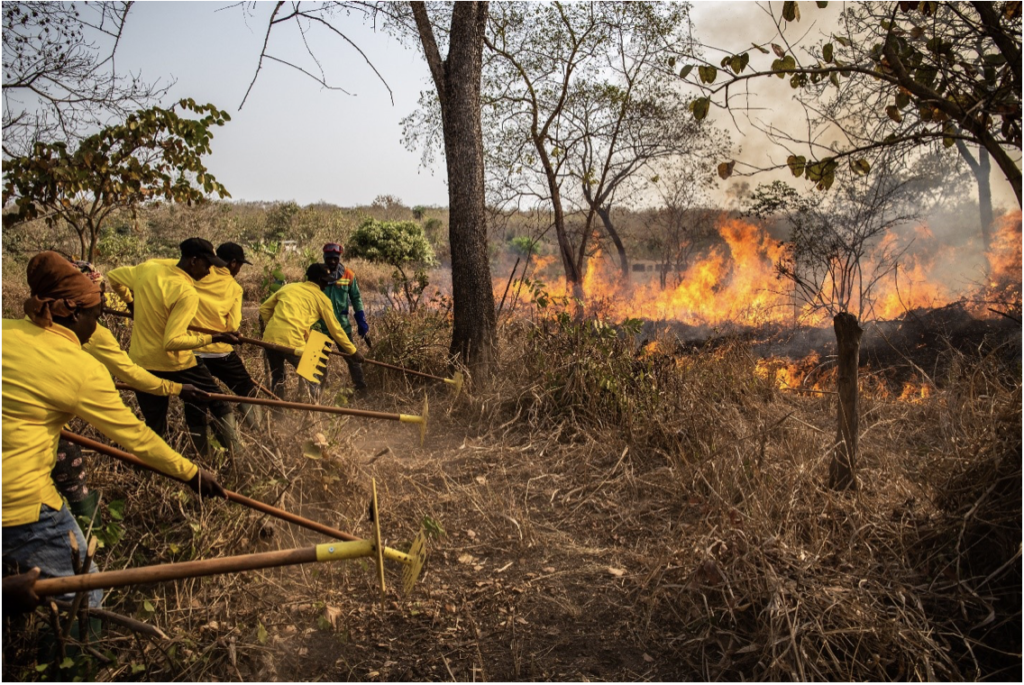
The forestry asset class is gaining popularity among investors because of the inherent ability of forests to sequester and store carbon, even as trees are harvested and processed into long-lasting wood products, removing emissions, and reversing climate change over the long-term. However, the flip side of this opportunity are the risks associated with inevitable climate change. For the forestry asset class, one of the greatest risks – both for the commercial asset, but also for increased emissions, is fire.
Fire is always one of the risks that investors consider when assessing a forest investment opportunity, and likewise one that forest companies manage. A common risk mitigation approach that investors pursue is insurance, so that in the event of a catastrophic fire, some of the financial losses can be recovered. However, insurance cannot take back the emissions created when those forests burn. Additionally, as the climate changes, fire risk will naturally escalate in certain regions, causing the already high insurance premiums to escalate.
This article aims to encourage investors and forest managers to reconsider how they view fire risk in a changing climate in the tropics. To consider taking a complementary, community engagement approach in addition to existing internal fire management practices or insurance policies. Active community engagement with respect to fire management not only reduces the likelihood and severity of fire risk in certain contexts, but simultaneously creates positive environmental and social benefits, while strengthening trust and relationships.
This is an article about insurance with impact, where we explore how a teak company in Ghana, Form Ghana, has engaged the local communities in the vicinity of its forests through various mechanisms, to reduce the fires that have been affecting the landscape year after year. In 2019, I had the good fortune of visiting Form Ghana’s operations, and was extremely impressed with this program, only one year after its implementation. I was encouraged to see that in addition to fire reduction, this program has contributed to several environmental and social benefits. Insurance doesn’t reduce fire risk, nor does it create positive environmental and social spin-off affects. Read on to learn how you can turn a cost centre (insurance) into both a value centre (asset protection) and an impact centre (forest landscape resilience and social empowerment and uplift).
Form Ghana and the local fire context
Form Ghana is a forest company, operating in central Ghana, since 2007. It has leased nearly 20,000 hectares in an agreement with traditional landowners and the Government of Ghana to grow teak for commercial purposes in designated forest reserves. It has established approximately 9,000 hectares of teak and restored more than 1,000 hectares of native forest. Form Ghana’s plantations are situated in a transition zone between the savannah in the north and low-land rainforest in the south. The location is exposed to the extremely drying Harmattan trade winds, blowing south from the Sahara from December through March, with the peak dry season occurring in January and February. Over this period, the fire risk for Form Ghana’s plantations is highest.
Prior to intervention from Form Ghana, wildfires frequently crossed the borders into the Forest Reserve during the dry season, threatening the plantations. Because of the vast unmanaged area surrounding the Reserve, intense fires would run uncontrolled through the landscape, subsequently degrading soils, and vegetation. Form Ghana quickly learned that all fires in the area are human-caused, and it became apparent that nobody was taking responsibility for controlling them.
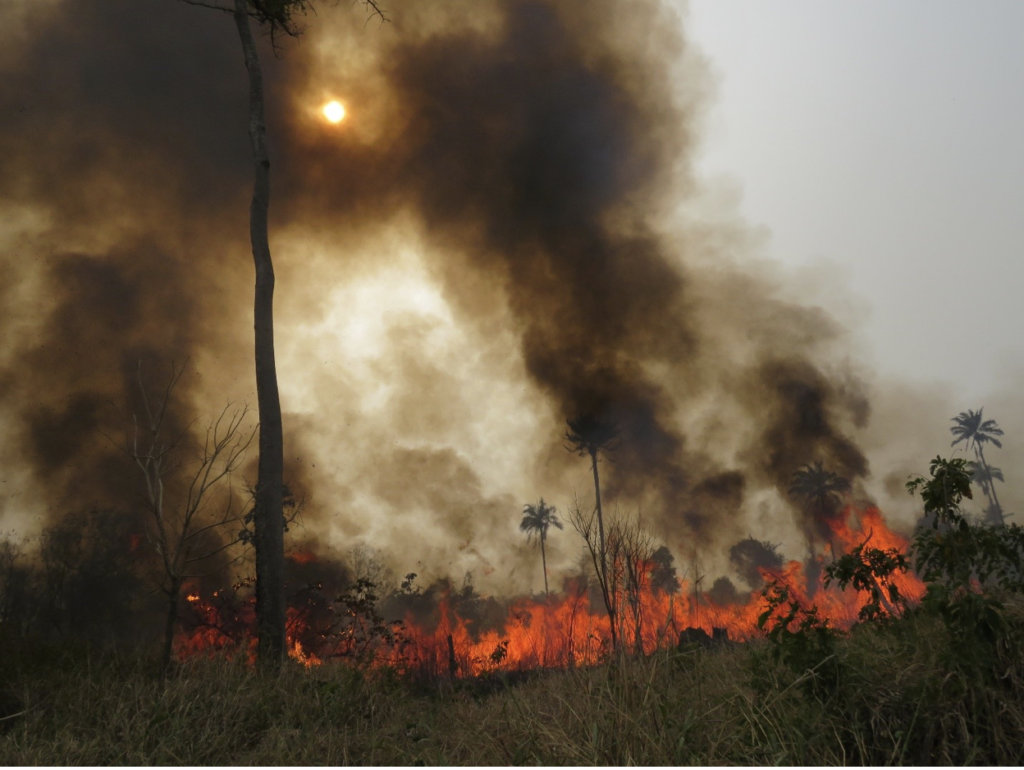
Decision to take a community approach
Like many forest companies facing high fire risk, Form Ghana initially tackled the problem internally. They installed a state-of-the art fire surveillance system, with cameras and fire towers to monitor fires coming into the concession. They set fire breaks before the dry season within and on the borders of the plantation. They constructed water access points throughout the plantation, maintained a fleet of fire vehicles and a trained fire squad to manage fires within the plantation (though often outside the plantation fighting fires to prevent them from coming in). However, the company soon realized that if it were to reduce the fire risk in the area around the plantations, it needed to address the source.
So, in 2017, supported with donor funds from DOB Ecology and DFID’s Partnerships for Forests programme, Form Ghana and Form International developed a Landscape Restoration Programme for the Tain II Forest Reserve, of which an Integrated Community Fire Management project was part. In this programme, all key-stakeholders, such as the Ghana Fire Service, traditional authorities, pre-existing community fire volunteers, farmers, assembly representatives, and the Forestry Commission were brought together to tackle the issues causing degradation of the Tain II Forest Reserve. Further expertise from external fire and landscape experts was also brought in to help understand the community and legal underpinnings behind the prevalence of fire in the area.
In 2018, this partnership carried out a baseline study in the local communities. The baseline confirmed that fire use is a traditional farming practice among the small-hold subsistence farmers that dominate the area around Form Ghana’s plantations. However, local bylaws prohibited the use of fire in the dry season. Farmers were left without options, and the government-appointed volunteer fire squads were without resources and support. Fire is a low-cost practice that farmers use to control weeds and to prepare soil for the planting season. Despite fire bans, farmers continued its use in secret, often resulting in uncontrolled escape fires. Neighbours’ investments were destroyed, and degradation of the Tain II Forest Reserve persisted as these fires crossed Reserve boundaries.
Revising the bylaws that outlawed fire use in the dry season was a critical element to ensure the success of the community fire management project, and this was possible because of the participation of traditional authorities and District Assemblies in the Landscape Restoration Programme. In 2019, carrying out controlled burns was legalized, so long as the community fire squad was supported and in operation. After the bylaws were revised, the partnership began supporting the volunteer fire squads at the village level with training material, setting up a regulatory system for farmers to follow and providing community fire volunteers an allowance, which enabled them to pay someone to tend their farms in the dry season while they focus on fire management activities. The Community Fire Management Project team worked across nine communities, covering more than 6000 hectares of land. Stakeholders developed a basic community fire management plan outlining objectives and activities to carry out before and during the fire season to reduce fire risk in the area and prevent fires from getting out of control. Examples included creating fire breaks around farms and next to foot paths.
The program has been successful at bringing together government, traditional authorities, and local farmers to tackle fire risk, where these groups were previously at odds on the topic. Most important, has been the support of local chiefs, endorsing community fire volunteers with the mandate to implement the activities, as formalized in their village fire management plan.
In addition to the community fire management approach, green fire belts outside the reserve have been established in a critical location where most of the fires come from. Two communities are responsible for this break, where community fire volunteers plant the fire belt with a local tree species, Terminalia superba, and are further responsible for stand maintenance. With these fire belts, once the canopy is closed, the weeds underneath will die off, leaving no undergrowth, or a low fire fuel load, to slow down a spreading fire.
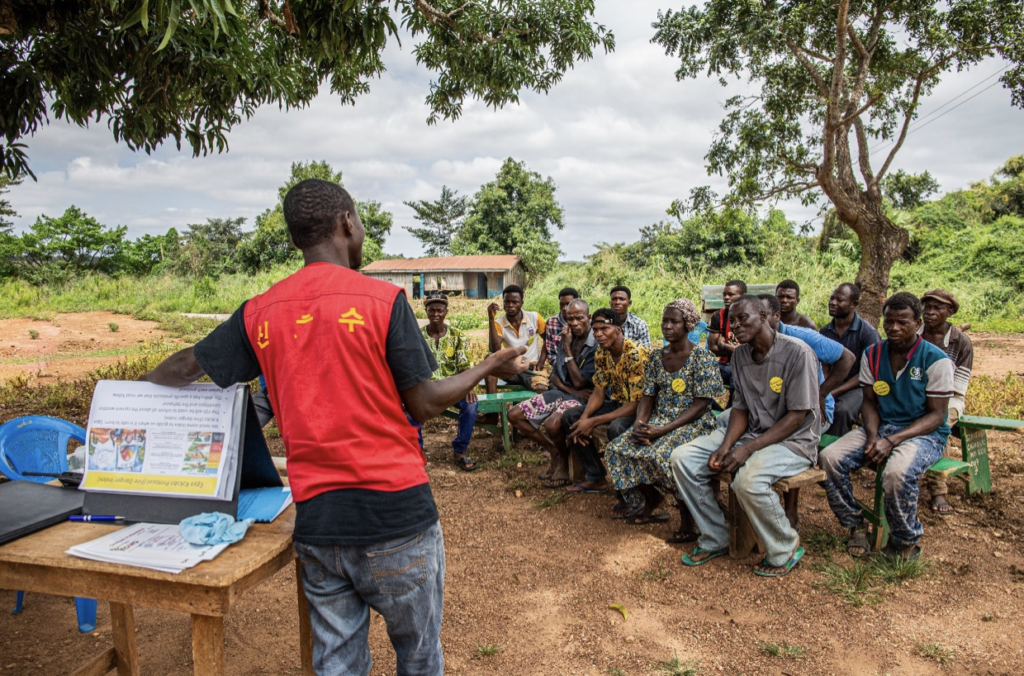
Protecting assets, restoring forest landscapes, and uplifting local communities
Reduction of fire risk and subsequent forest degradation
Since the community fire management program began in 2018, fire prevalence around the forest reserve has decreased by 78% (see the maps below in illustration). Though Form Ghana’s sophisticated internal fire management has enabled rapid response and successful prevention of plantation loss due to fire, it was not the same in the surrounding farms. With the establishment and upgrade of public roads, the fire response time and efficacy of community fire volunteers to control escape community fires has vastly improved. Before the project started, elephant grass (a local pest species) which proliferates after fire, reached heights of more than three metres, dominating the vegetation, and preventing natural regeneration processes in the unmanaged areas of the Forest Reserve. In areas where the fire is kept out, natural regeneration of native forest species is taking place.
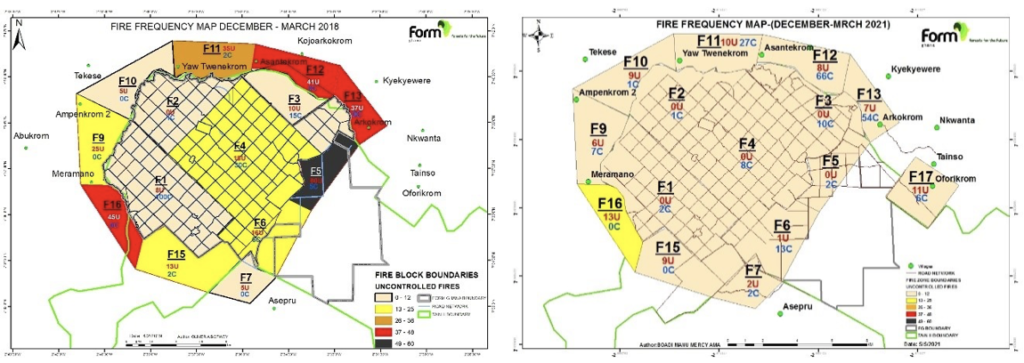
Improved farm management
The community fire management project has enabled the implementation of the wider Forest Landscape Restoration Programme for the Tain II Forest Reserve. Another element of the landscape programme has been to engage farmers in adopting agroforestry systems for both restoration of degraded farms and livelihood diversification. However, this has only recently been made possible. For decades, farmers have been reluctant to invest into tree crops as their fields have burned annually. Since the fire ban has been lifted and fire use has come under control, farmers are noticing a reduced prevalence of fire. As a result, they are showing interest in establishing permanent agricultural and agroforestry systems. Under this regime, farmers are active in both managing their farm and protecting it from fire in the dry season. They are also using fire less, as incorporation of tree crops onto their farms is helping to supress weeds. Because of the increase in permanent farm systems around the Tain II Forest Reserve, the buffer zone around the Reserve is now managed year-round, hindering fires from running freely across the landscape.
Community empowerment
Communities are also benefitting from having active volunteer fire squads, that are now empowered and financially supported to do their work, as opposed to previously where they were marginalized. Empowerment also stretches beyond those actively involved in fire management, directly to the farmers, who are not using fire illegally and in secret, but are permitted to use it appropriately and in a controlled way. However, as mentioned, they are also turning away from the practice as they find cultivating permanent tree crops, perennials and other cash crops don’t require it. At the same time, crop diversity provides them with a variety of income streams. These practices are snowballing, being picked up by farmers seeing the success of their neighbours with mixed agroforestry systems.
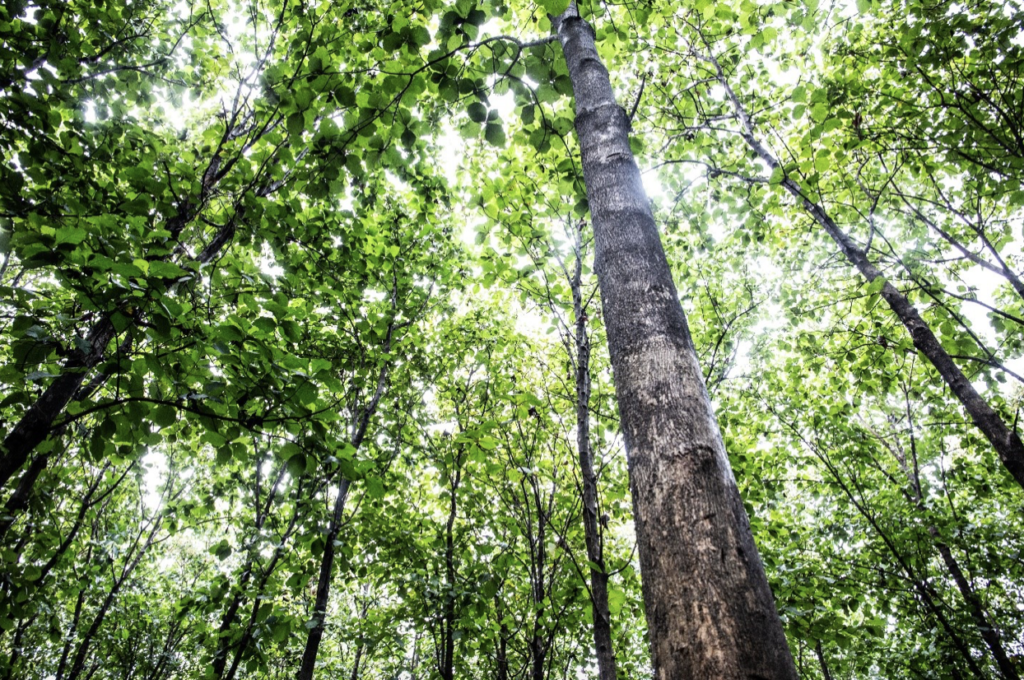
An investment in prevention and community empowerment
Depending on several factors (such as size, climate, species, age, etc.), forest fire insurance can cost tens of thousands of dollars in exorbitant premiums each year. In exchange for this, forest companies and their investors are granted assurance that a portion of their financial losses will be recovered in the event of a catastrophic fire. However, there is always a risk that the insurance policy will not cover the damages depending on the terms.
Wouldn’t it be a better approach, or at least a complementary one to invest into fire prevention? Of course, all sustainably managed forest companies will have both fire prevention and fire suppression measures they carry out within their forests to reduce fire risk and negative impact, but what about going beyond that? What if there were measures that could both reduce fire risk and create a waterfall of additional co-benefits?
By complementing its robust internal fire management program through investment into an integrated landscape approach, Form Ghana has been able to generate this waterfall. In addition to reducing fire prevalence around the forest reserve, it has empowered farmers to uptake improved farming systems, removed the stigma around fire use and created consensus among stakeholders previously in conflict on the topic. Where prior to the program, community fire volunteers felt powerless – they are now proud and confident, feeling they are part of a solution to protect the lives and livelihoods of their neighbours. Furthermore, and perhaps most importantly, it is building strong and trusting relationships with these communities – the foundation for any sustainable forest company sharing the landscape with other stakeholders.
At the end of the day, fire insurance is one of several risk mitigation measures that a company and investors can apply to dampen the financial impact of fire on forest assets. Though community fire management is not insurance, it has been an important piece of Form Ghana’s approach to managing and reducing risk to the fire-prone landscape, while at the same time achieving significant positive social and environmental impact.
Learn more
I would like to thank Rosa Diemont, Form International’s Landscape Restoration Expert for her input to this article. You may contact Form Ghana or Form International to learn more about this program and their respective organizations. If you would like to learn about other approaches to insurance with impact targeted to the unique context of your forest investment strategy in the tropics, please reach out.





